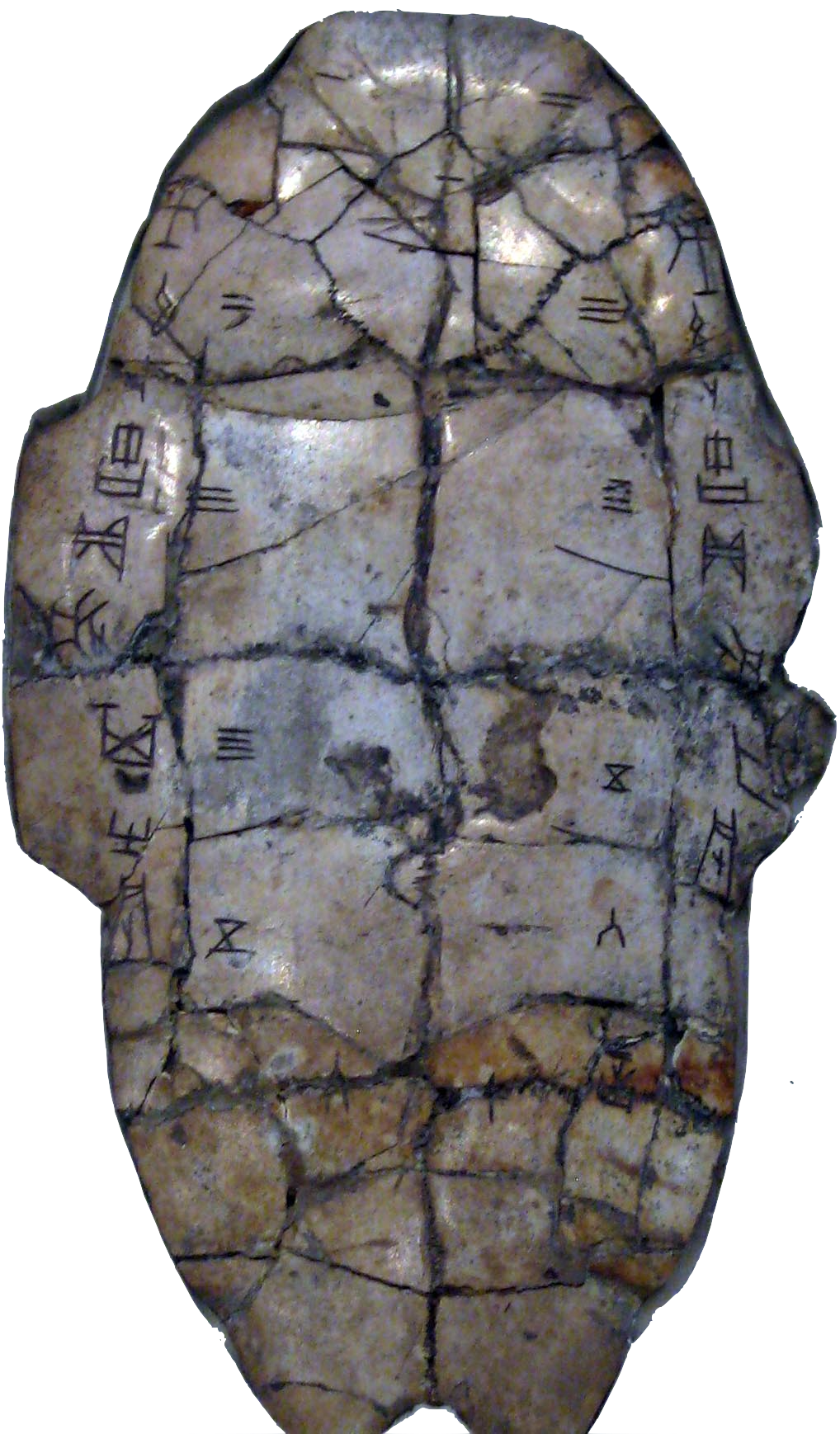Not Without Witness - Excerpts from our new "Shaanxi" book
Photo: Atop the 600 -year-old city wall of Xi'an, the ancient capital of China.
“In bygone generations God allowed all nations to walk in their own ways. Nevertheless He did not leave Himself without witness” (Acts 14:16-17).
In our previous newsletter we introduced a new book, “SHAANXI: The Cradle of Chinese Civilization”. We examined how the earliest Chinese people knew about a global flood that had wiped out almost all of mankind, and after arriving in today’s north China just a century or so after the Tower of Babel, for thousands of years the Chinese worshipped only the one true Creator God, Shangdi. There was no idolatry, and the emperor offered sacrifices to Shangdi at prescribed times to seek His blessing and protection.
Alas, the wicked emperor Wu Yi (who reigned from 1147-1112 BC) came to power and a long slide into spiritual darkness began, with idolatry infesting the land.
In this issue, we want to go deeper into this fascinating ancient history, for it reveals how the great Chinese civilization has interacted with God throughout history, leading to the greatest revival in Christian history during the past 50 years.
Just how God shaped Chinese history to conform to His Will largely remains a mystery. Some things are inexplicable and are best grasped by simply trusting that throughout the centuries the Creator “did not leave Himself without witness” among the Chinese and other peoples of the world.

The Missing Astronomer
At around the time of the birth of Jesus, one of the chief Chinese astronomers at the imperial court in Xi’an was a high-ranking official named Liu Xiang. Liu mysteriously disappeared from China for over two years at the time of Christ’s birth, after he and his team discovered a unique star, which they called the ‘King Star’.
Liu Xiang is believed to have lived from 77 BC to 6 BC. While at first glance that would appear to place him outside the span of Jesus’ birth, many Bible scholars point out that due to differences in calendars, Jesus was actually born between 6 BC and 4 BC according to today’s widely-used Gregorian calendar.
At the time, a journey along the Silk Road from Shaanxi to Judea took from between one to two years, depending on the quality of mounts used by the traveler. If Liu was granted permission by the emperor to undertake the journey, it’s likely he would have been granted use of the finest horses and camels, and being a high official, he was likely accompanied by a large group of soldiers for protection.
The belief that the Chinese were represented among the Magi who traveled to Bethlehem persisted, and in the eighth century a Nestorian church leader claimed: “The Magi, returning from Bethlehem, brought the first news of the Savior to China.”
Revealingly, when the wise men first arrived in Jerusalem and asked where they could find the new-born king, Matthew records: “When King Herod heard this he was disturbed, and all Jerusalem with him” (Matt. 2:3).
It’s unlikely the whole city would have been disturbed if just three men had arrived in Jerusalem, which saw many merchants continually passing through it. If a large group of men had turned up together, however, along with hundreds of soldiers and bodyguards—some from as far afield as China—it would have caused quite a stir, causing the jealous king to attempt to annihilate all competition to his throne.
Perhaps God, in His wisdom, chose to honor the birth of His Son by sending dignitaries from across the ancient world to mark the momentous event. Many Chinese Christians today are thrilled to think that their race may have been among the first worshippers of Jesus Christ.
The remarkable chain of events did not stop there. Thirteen months after the “King star” appeared, a special comet appeared in the sky over China for 70 days at a time that may correlate with the birth of Jesus in faraway Bethlehem.
Thirty-three years later, a total eclipse is detailed in Chinese history. The Bible records that when Jesus died, darkness fell upon the land for three hours. According to the Chinese classic, History of the Latter Han Dynasty:
“In the summer, fourth month of the year...the sun and moon were eclipsed. The sins of all people are now on one man. The emperor now proclaims pardon to all under heaven.” Another note in the imperial records of the time simply stated: “The Man from Heaven died.”
How the Chinese thousands of miles away knew that the sins of all people had fallen upon one man defies human explanation. The best way to understand such things may be to simply accept that God “did not leave Himself without witness.”

The earliest forms of Chinese writing are found on tortoise shells and animal bones from the later part of Shang Dynasty. The Shang ruled China from 1600 to 1046 BC—approximately from the time from Moses to King David in the Bible.
God’s Witness in Chinese Writing
The first thing many non-Chinese people notice about China is their unique writing system, but few realize that the origins of Chinese characters date back thousands of years. Each word, or character, is made up of smaller pictographs, or radicals, that have individual meaning. In recent decades, scholars have examined many of the characters and found uncanny parallels with events recorded in the Bible.
We have already discussed how recorded Chinese history began less than a century after the dispersion of people groups at the Tower of Babel. So catastrophic was the flood and subsequent events, it’s natural to assume that the earliest people to reach China would have brought the story of God’s creation and mankind’s fall with them, to be handed down as a warning to future generations.
Could it be that God, in His infinite wisdom, chose to preserve a testimony of His great acts within the very structure of the Chinese language?
Let’s examine just five Chinese characters, which may help you grasp this unique concept.
造 ‘To Create’
The character ‘to create’ consists of several radicals, including:
dust or mud 土 ; speech 告 ; and walking 辶
Furthermore, the radical for “speech” (告) consists of the characters 生 (“life”) and 口 (“mouth”).
It is surely more than coincidence that the ancient Chinese combined these components together in such a way that resembles the account of the creation of Adam found in Genesis 2:7: “Then the Lord God formed a man from the dust of the ground and breathed into his nostrils the breath of life, and the man became a living being.”
鬼 ‘The Devil’
Adam and Eve enjoyed a time of perfect peace and harmony in the Garden of Eden, until the devil tempted them to sin and their relationship with God was ruined. The Chinese character for ‘the devil’ or ‘tempter’ includes these three components:
Man 儿 ; garden or field 田 ; and ‘secret’ or private’ 厶
Thus, the ancient characters for ‘devil’ or ‘tempter’ include a man in a private garden, again reflecting the account in Genesis, where Adam and Eve were placed in the Garden of Eden before the devil tempted them to rebel against God.
船 ‘Boat’
The traumatic global flood that wiped out humanity except eight survivors would have been fresh in the minds of the earliest Chinese, and flood accounts persist to the present day among many of China’s ethnic groups. The full Chinese character for ‘boat’ consisted of three interesting components, with the character for mouth also used to signify people:
Vessel 舟; eight 八 ; and mouth 口
The Book of Genesis records that only Noah and his family—eight people in total—survived the cataclysmic flood in a boat that God instructed Noah to build. The Bible says:
“He did not spare the ancient world when he brought the flood on its ungodly people, but protected Noah, a preacher of righteousness, and seven others” (2 Peter 2:5).
義 ’Righteousness’
God delivered the Israelites from Egypt and from the angel of death by commanding them to sacrifice a lamb and apply the blood to the doorposts of their homes (Exodus 12:1-3). Then in the wilderness of Sinai, He gave them instructions for sacrificing animals to atone for sin (see Leviticus 16:15–16). This concept appears to have come into the Chinese language, as the traditional character for ‘righteousness’ consists of four components:
Sheep 羊 ; I or me 我 ; ‘hand’ 手 ; and spear 戈
According to this ancient concept, righteousness is obtained by a person being covered by a sheep (or lamb) that has been slain by their own hand.
來 ‘Come’
Finally, many Chinese believers have used the origins of their ancient characters as a bridge to share the Gospel with non-Christians. A favorite witnessing-tool is the character for the Chinese word “come”:
The character consists of a cross 十 ; along with a person 人on that cross. Fascinatingly, as well as the person on the cross, there are two other people (人人) present.
In Chinese, when the character for person is written twice, the meaning changes to “everyone”. This is significant because Jesus died on the cross with two thieves on either side of Him. By piecing these different radicals together, a person may see the example of Christ dying on a cross between two guilty thieves, as a sacrifice for all who will believe and come to Him.
Over the years, many Chinese have come to faith in Jesus Christ after the composition of this one character has been explained to them. This approach often piques people’s interest and enables Christians to explain that Christ’s invitation to “come” for salvation is freely available to everyone, but at the crucifixion one of the thieves believed in Jesus and the other rejected Him. Evangelists may then pivot the conversation to ask the hearer, “which one are you?”
There are dozens of other examples of Chinese characters that appear to reflect biblical text. God surely did leave a witness for the Chinese people both in their ancient written language and by His provision for righteousness, which was fulfilled by the perfect sacrifice of the Lamb of God, Jesus Christ.
SHAANXI - The Cradle of Chinese Civilization
Book 7 of ‘The China Chronicles’
This newsletter contains excerpts from ‘SHAANXI: The Cradle of Chinese Civilization.”
To order a copy of the book, please visit our online bookstore for details. A kindle/ebook version is also available online.
Alternatively, if you send a donation to any Asia Harvest project, please indicate that you would like a complimentary copy of the book and we will gladly send you one.

E-Newsletter Sign Up
RECENT POSTS

"Feel free to share this message with interested Christians or on social media" - Asia Harvest






